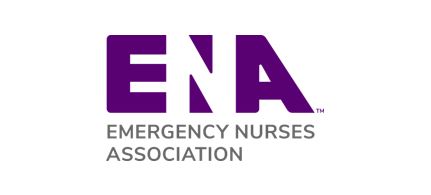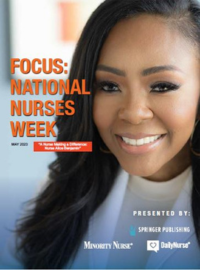
Implementation of Trauma-informed Principles in Nursing Education: An Appeal for Action
Exposure to traumatic stress can have a life-altering negative impact on student nurses. Traumatic stress can challenge effective coping, emotional regulation, and the ability to focus, retain, and recall nursing concepts. According to the Substance Abuse and Mental Health Services Administration (SAMHSA, 2014), the “3 E” conceptualization of trauma are Event (single or cumulative), Experience (neglect, abuse, betrayal), and Effects (anxiety, loneliness, depression, feeling unsafe ) are manifested in various ways in people with exposure to trauma.
An individualized student-centered approach is crucial in understanding and adapting teaching pedagogy in nursing education to realize, recognize, respond, and resist re-traumatization (SAMHSA, 2014)in student nurses with a history of traumatic stress.
This article discusses the concept of trauma-informed pedagogy in nursing education and its significance in promoting equity and inclusion. Trauma-informed pedagogy suggests that past experiences can negatively impact health outcomes and learning (Garfin D. R. et al., 2018). As a result, educators must be able to identify signs of trauma and adapt their teaching methods to meet their students’ unique needs. It discusses the impact of trauma on nursing students’ physical and mental health functioning, and it then delves into implementing principles of trauma-informed pedagogy in the classroom.
Background/Significance
Trauma is defined as an event or set of circumstances that an individual experiences as physically or emotionally harmful or threatening, resulting in lasting adverse effects on their functioning and well-being (Bremner, J. D. 2006). College students, despite their excitement to succeed, often experience severe psychological distress, with 70% reporting such distress. Additionally, 35% of students were diagnosed with anxiety, and 29% had depression (American College Health Association, 2022).
Transgender and LGBTQIA students report higher levels of mental health issues than their straight counterparts. Microaggressions are also experienced by underrepresented students, creating a sense of unsafety on campus. Evidence suggests that Colleges should pivot to a learning space that promotes inclusion and equity. Only 40% of college students think colleges are doing enough to support mental health (Veneable, M.A., & Pietrucha, M. E., 2022).
The Universal Design for Learning ( UDL) recognizes that every student has different learning needs, and a one-size-fits-all approach is an ineffective instructional strategy. Similarly, implementing trauma-informed pedagogy principles within the nursing curriculum is a significant step toward meeting every student’s learning needs and experiences, promoting accessibility, equity, and inclusion in nursing education.
How Traumatic Stress Affects the Brain
Traumatic experiences can affect the brain’s development, structure, and function. It is critical to understand normal brain development to distinguish brain abnormalities. The areas of the brain responsible for stress responses are the amygdala, hippocampus, and pre-frontal cortex (Bremner, J. D., 2006). When an individual is exposed to traumatic stress, there is an increase in the level of cortisol and norepinephrine. Repeated exposure to stress increases the level of cortisol and norepinephrine and affects normal brain functioning and stress regulation, resulting in pathophysiological change(Bremner, J. D. 2006).
Students who are affected by traumatic stress may have difficulty learning concepts, focusing, and retaining information, resulting in course failures and higher attrition rates compared to their peers who have not experienced trauma. Traumatic experiences can cause anxiety and depression in some students. Past and current data suggest that trauma-informed care is critical for the promotion of equity in people with a history of trauma (Han et al., 2021).
Students’ sense of safety is disrupted, and the cumulative effects are difficulty adjusting to college experience, low grades, and high attrition rates. According to (Corello J., 2018), educators should adopt trauma-informed teaching and be compassionate and consistent in the learning environment. Despite the impact traumatic experience has on the brain, there is hope and possibility for students to be successful.
Implications for Nurse Educators
In the Four “Rs in the Trauma-informed approach to teaching student nurses(SMASHA, 2014), the nurse educator must convey empathy, possibilities, and hope to student nurses and focus on “what happened to you, instead of what is wrong with you’. Implementing trauma-informed principles is an issue of equity and inclusion and must be viewed through the lens of disability.
Realization
Research suggests that 66%-85% of youth report exposure to traumatic events by the time they enter college (Read et al., 2011). Additionally, approximately three-quarters of college students, 77 %, experienced moderate to severe psychological distress (ACHA, 2022). Understanding that traumatic experiences can affect the development, structure, and function of the brain, the nurse educator must acknowledge that trauma happened and provide a trusting teaching environment that emphasizes hope and transformation.
Realizing that trauma affects the student’s ability to function optimally, the nurse educator must stay involved in world events that may be traumatic to students: for instance, racism, disability, COVID-19, sexism, sexual harassment, and sexual orientation. Modeling emotional intelligence skills, self-reflection, and situational awareness, the nurse educator can convey trust and transparency when discussing and understanding sensitive topics in the classroom.
Recognize
The nursing process is a framework taught in nursing education to provide care for diverse populations. It begins with an assessment. Likewise, the nurse educator must be able to recognize signs of traumatic stress and respond with empathy, kindness, and understanding. Some signs and symptoms are difficulty focusing on a topic, lack of engagement, absenteeism, anxiety, low grades, and difficulty adjusting to the college environment.
It is essential to acknowledge that the traumatic event happened, and an evidence-based action plan is activated to promote healing and agency to enhance academic success. The nurse educator must be knowledgeable about topics or events that may trigger traumatic stress and develop a lesson plan or teaching strategies to avoid triggers—for instance, disparities in healthcare outcomes for minorities. Nurse educators must adopt several strategies to effectively support students’ learning experiences in teaching sensitive topics. To this end, the nurse educator should consider the value of establishing eye contact with students and facilitating opportunities for them to share their lived experiences. The nurse educator must also demonstrate a genuine interest in the student experience. By applying these strategies, nurse educators can foster an environment that supports students’ learning journey and promotes their well-being.
Respond
When a student goes through a traumatic experience, their sense of safety can be severely affected. As a nurse educator, it is essential to demonstrate emotional intelligence while conversing with such students regarding traumatic stress. Using the student’s name and giving them enough time to contemplate and respond is crucial. In addition, the nurse educator should offer their presence to show kindness and compassion, which can provide comfort and support for the student.
As a nurse faculty member, you can support your student’s academic journey by referring them to the Office of Accessibility and Disability. The office provides essential services to students with disabilities, ensuring they have the resources to succeed in their studies. Letting your students know you are available for office hours and phone calls is essential, as this can help them feel more comfortable and supported.
Creating a respectful and inclusive learning environment is crucial to the success of all students. You can do this by promoting a culture of civility and respect in your classroom and being mindful of your students’ diverse needs. If a student is experiencing anxiety or stress, consider extending assignment due dates to help alleviate their concerns.
Finally, it is essential to recognize that some students may have a history of trauma that could impact their ability to learn. To increase the accessibility and inclusion of these students, incorporate multiple teaching modalities that address the cognitive, psychomotor, and affective domains of learning. Doing so can help ensure that all your students can succeed.
Resist re-traumatization
In a nursing education culture that prioritizes diversity, equity, and inclusion, it is essential to recognize that some college students may have experienced trauma. By intentionally incorporating transformative, trauma-informed practices into nursing education, we can foster a sense of human dignity, promote academic growth, and help students thrive. To prevent re-traumatization, faculty and peers must have zero tolerance for discrimination against students. The learning environment must prioritize civility, human caring, compassion, and consistency (Corello, 2018) while avoiding punitive measures and implementing clear policies and procedures. Sensitive topics should be approached with empathy and understanding, and training modules focused on trauma and its effects can help create awareness and build a strong sense of community.
Conclusion
Integrating trauma-informed practices into nursing education requires comprehensive changes across multiple levels, from micro to macro systems. At the micro level, nurse faculty must demonstrate empathy, benevolence, courtesy, and honor towards individuals who have survived trauma. They must also remain watchful in recognizing, validating, and averting re-traumatization for student nurses who have experienced trauma. By nurturing a learning environment that fosters personal development and transformation, faculty and students can collaborate to establish a warm and accommodating community open to everyone.
References:
1. American College Health Association -National College Health. (2022). Assessment III: Undergraduate Student Reference Group Executive Summary Spring 2022. Silver Spring, MD: American College Health Association.
2. Bremer, J. D. (2006). Traumatic stress: effects on the brain. Dialogues in Clinical Neuroscience, 8(4), 445-61.
3. Carello, J. & Thompson, P. (Eds). (2021). Lessons from the pandemic: Trauma-informed approaches to college, crisis, change. Palgrave Macmillan.
4. Garfin, D. R., Thompson, R. R., & Holman, E. A. (2018). Acute stress and subsequent health outcomes: A systematic review. Journal of Psychosomatic Research, 112, 107-113. doi: 10.1016/j.jpsychores.2018.05.017
5. Goddard, A., Jones, R. W., Esposito, D., & Janicek, E. (2021). Trauma-informed education in nursing: A call for action. Nurse Education Today, 101. doi: 10.1016/j.nedt.2021.105064
6. Han, H. R., Miller, H. N., Nkimbeng, M., Budhathoki, C., Mikhael, T., Rivers, E., Gray, J., Trimble, K., Chow, S., Wilson, P. (2021). Trauma-informed interventions: A systematic review. PLoS One, 16(6), e0253209. Doi: 10.1371/journal.pone.0253209
7. Kubala, J. (2020). Of Trauma and Triggers: Pedagogy and Affective Circulations in Feminist Formations, 32(2), 183-206.
8. Read, J. P., Wardell, J. D., Vermont, L. N., Colder, Ouimette, P., & White, J. (2012). Transition and change: Prospective effects of posttraumatic stress on smoking trajectories in the first year of college. Health Psychology, 32(7), 757-767.
9. SAMHSA’s concept of trauma and guidance for a trauma-informed approach. (2014). HHS Publication No. (SMA) 14-4884. Substance Abuse and Mental Health Services Administration, Rockville, MD.
10. Veneable , M. A., & Pietrucha, M,E. (2022). 2022 College Mental Health Report, Best Colleges.






